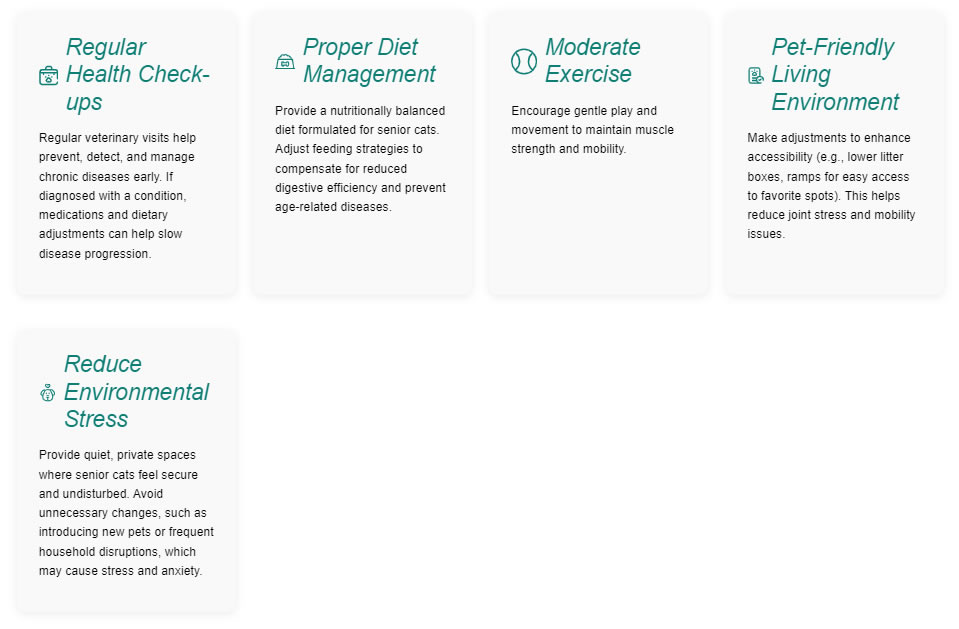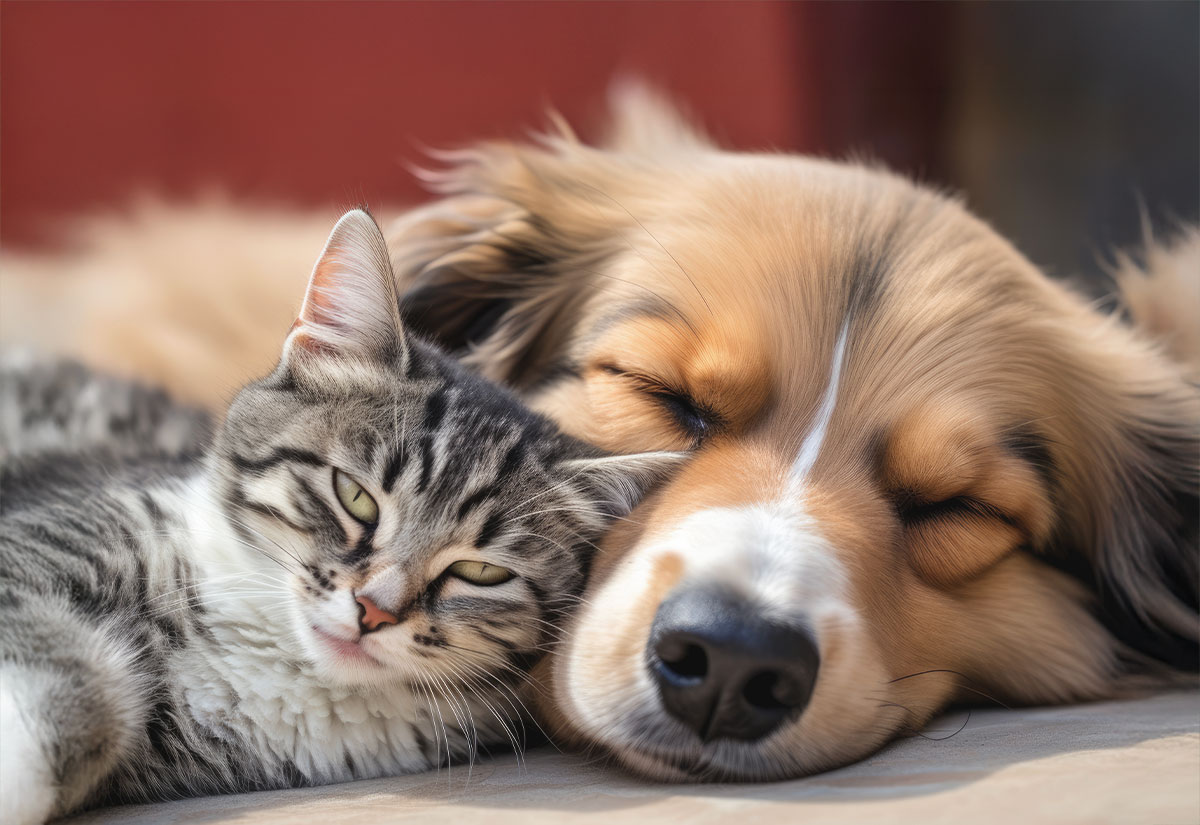▍Definition of Aging
The definition of aging has always been difficult to pinpoint. According to the 2021 AAHA (American Animal Hospital Association) / AAFP (American Association of Feline Practitioners) guidelines, the age classifications are as follows:
- Mature adult cats: 7-10 years old
- Senior cats: 10 years and older
Aging is a complex physiological process that occurs gradually over time. Just like humans, cats experience inevitable physical changes as they grow older.
▍Physiological Changes in Senior Cats
- Digestive System Changes
- Muscle & Fat Loss
- Decline in Sensory Organs
-
Changes in Vital Organ Functions:
- Heart & Lung Aging
- Kidney Function Decline
- Liver Function Decline
- Gastrointestinal Changes
- Behavioral Changes -- Increased sleep duration, decreased activity levels
By the age of 12 and beyond, these changes progress silently, often going unnoticed. Studies have shown that:
- 1 in 5 senior cats (14+ years old) has reduced protein digestibility (<77%)
- 1 in 3 cats (12+ years old) has reduced fat digestibility (<80%)
This indicates that as cats age, their ability to digest and absorb essential nutrients declines, making dietary adjustments crucial.
▍Caring for Senior Pets

Many pet parents find it difficult to accept that their cat is aging, but aging is an inevitable part of life. As a cat's age, body, and behavior change, the risk of chronic diseases increases over time. Thus, it is every pet parent's responsibility to understand, adapt, and provide the best possible care—ensuring their beloved companion enjoys a comfortable, healthy, and happy senior life.
References:
- 柯亞彤。2023。貓狗營養學(初版)。晨星出版有限公司。
- 陳千雯、黃郁文。2024。貓咪的食萬個為什麼?(初版)。城邦文化事業股份有限公司 麥浩斯。

